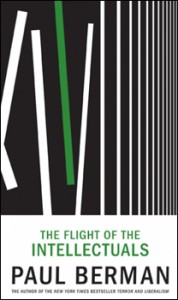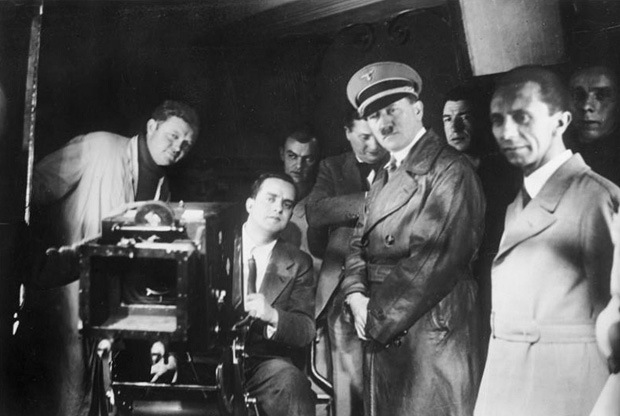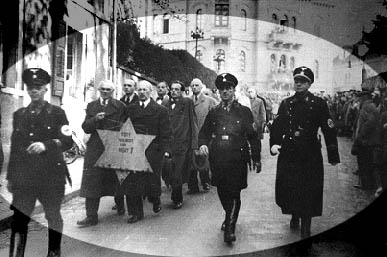Alex Constantine - April 26, 2010
By S. R. Shearer
 The Pioneer Fund was established as a charitable trust on February 27, 1937 in New York City. Harry H. Laughlin, Frederick Osborn and textile magnate Wickliffe Draper were the principle founders.1 The Fund's stated purpose was to "improve the character of the American people" by encouraging the procreation of descendants of "white persons" and to provide aid in conducting research on "race betterment with special reference to the people of the United States."2 The current president of the Pioneer Fund is a shadowy figure named Harry F. Weyher, a financier and corporate lawyer who eschews interviews and runs the Fund without pay or staff from his offices in New York; he is assisted in his work by four other "Trustees" - one of whom has been Tom Ellis, a close associate of Pat Robertson and Tim LaHaye in the Council on National Policy (CNP), the principle coordinating agency in bringing together various members of the religious right with the business right and the political right. All serve without pay and staff.
The Pioneer Fund was established as a charitable trust on February 27, 1937 in New York City. Harry H. Laughlin, Frederick Osborn and textile magnate Wickliffe Draper were the principle founders.1 The Fund's stated purpose was to "improve the character of the American people" by encouraging the procreation of descendants of "white persons" and to provide aid in conducting research on "race betterment with special reference to the people of the United States."2 The current president of the Pioneer Fund is a shadowy figure named Harry F. Weyher, a financier and corporate lawyer who eschews interviews and runs the Fund without pay or staff from his offices in New York; he is assisted in his work by four other "Trustees" - one of whom has been Tom Ellis, a close associate of Pat Robertson and Tim LaHaye in the Council on National Policy (CNP), the principle coordinating agency in bringing together various members of the religious right with the business right and the political right. All serve without pay and staff.
The Pioneer Fund has assets of about $5-million and gives away most of its $1-million in annual income to a dozen or more scholars from Northern Ireland to California who study IQ and genetics. The Pioneer Fund supported a significant portion of the research cited in the recent best-selling book on race and intelligence, The Bell Curve, by Richard J. Herrnstein, a Harvard University psychologist who died in September 1994, and Charles Murray, a political scientist at the American Enterprise Institute. In the billion dollar world of philanthropy, the money doled out by the Pioneer Fund may seem paltry. But the numbers don't tell the real story of the Fund's influence. "The Pioneer Fund has been able to direct its resources like a laser-beam," says one critic, Barry Mehler, a historian at Ferris State University who has been gathering information on it since the 1970s. "I credit the Fund for being a major factor in the present resurgence of the biological-determinism movement - a factor that is far out of proportion to the amount of funds it has."3
Whether people revere or revile the Fund, most say it has stretched relatively few dollars a long way. "It suggests to me that as long as you focus on your mission, you can make an impact," says Dwight Burlingame, director of academic programs and research at Indiana University's Center on Philanthropy. "A lot of small foundations search for this kind of niche, where they can try to create an identity (and an impact)."4 Mr. Weyher says his strategy has been to do just that. He chooses from the 30 applications he receives each year those projects that are "too much of a hot potato" to get money elsewhere.5
All of the men connected to the establishment of the Fund were admirers of Adolf Hitler. They believed unequivocally in white superiority and held that it (i.e., white supremacy) derived from "the evolutionary process." They were motivated to establish the Fund by what they considered to be the overwhelming "success" of the Nazi eugenics policy6 - a startling defamation, but one which is easily documented. Take Harry Laughlin, the Fund's most energetic early personality, for example: in May 1936, Dr. Carl Schneider, a professor of "racial hygiene" at the University of Heidelberg and dean of the school's faculty of medicine (and who, incidentally, also served as a "scientific adviser" for the extermination of handicapped people in Germany) offered Laughlin an honorary degree of "Doctor of Medicine." Laughlin was deeply moved; he enthusiastically replied, "I stand ready to accept this very high honor. Its bestowal will give me particular gratification ... To me this honor will be ... valued because it comes from a nation which for many centuries nurtured the human seed stock which later founded my own country and thus gave basic character to our present lives and institutions."7
The lives of all the men connected to the founding of the Pioneer Fund exhibit the same Nazi-like attachments and affinities - and this despite the fact that most of them attempted to distance themselves publicly from National Socialism as an outright political ideology. Indeed, despite their inner ebullience towards Hitler, the men connected to the Fund were conscious of the need NOT to appear too slavishly devoted to fascism as a political philosophy. Madison Grant, author of The Great Race and an admirer of the work of the Fund (please see page 17 this journal) - warned Laughlin to this effect in 1937; he wrote a letter to Laughlin cautioning him against becoming too closely identified with the Nazis; he advised Laughlin that, although "most people of our type" are in sympathy with Germany's actions, eugenicists had to "proceed cautiously in endorsing them"8 - hence the need to occasionally condemn anti-Semitism and overt racism as such, if only to keep the Jews and other minorities at bay. The dissembling apparent here has been all too much a part of the history of the Pioneer Fund, and continues unabated, even today, as - for example - the manner in which the Fund has attempted to hide its connection to the passage of Proposition 187 in California (see below); but insofar as the Nazi eugenics policy itself was concerned, all of the men connected early on to the Fund would have had little difficulty in agreeing with their colleague Frederick Osborn when he said that the Nazi eugenics program was the "most important experiment which has ever been tried (in the history of the world)."9
Since the end of World War II eugenicists connected to the Fund have tried to separate themselves from the legacy of the Holocaust and the ideology of Nordic superiority by eliminating references to "ethnic racism" in their official pronouncements and from the agendas of their various "learned" societies. For example, in 1954, The British Annals of Eugenics was renamed The Annals of Human Genetics; in 1969, The Eugenics Quarterly, the successor of The Eugenics News, was renamed The Journal of Social Biology. Moreover, eugenicists dropped the term "eugenicist" in describing themselves and began referring to themselves as "population scientists," "human geneticists," "psychiatrists," "sociologists," "anthropologists," and "family politicians" - all in an attempt to distance themselves and their work from its hideous outcome in World War II and the Holocaust. To this end, even the Fund dropped all references to "whites" and the "white race" from its charter - and it's worked: these moves have helped the Fund regain acceptance in the scientific community. Today the Pioneer Fund has regained its foothold in academia, financing projects connected to Harvard, Yale, the University of Delaware, the University of California at Berkeley, etc.10 - and the same subterfuge insofar as what the Fund is really all about continues without any apparent letup. Take, for example, the manner in which the Fund has sought to hide its connection to Proposition 187 (California's 1994 anti-immigrant initiative). Opponents of Prop. 187 charged early on that the initiative was being partially underwritten by the Pioneer Fund. "Not so!" replied proponents of the measure - and, strictly speaking, they were right. There has been no direct connection between the Fund and Prop. 187. But the indirect connection has been extensive and pervasive. The examples are almost too numerous to mention; take just one: Alan Nelson. Nelson is one of the authors of Prop. 187 and was a driving force behind the measure. During the almost two-year "lead-up" to passage of the measure, Nelson was occupied almost full-time on work connected to the initiative. The question is, who paid him during this time? - an organization calling itself FAIR (Federation for American Immigration Reform). And where did FAIR get its income? - from the Pioneer Fund!11 To say under such circumstances, then, that the Pioneer Fund did not help bankroll Prop. 187 is disingenuous at best, and somewhat deceitful at worst. It's precisely this kind of dissembling and duplicity that contributes so greatly to the murky and even sinister aura which surrounds the activities of the Fund.
German historian and sociologist Stephen Kuhl, author of The Nazi Connection, cautions people of good-will in the United States to stay clear of those who are connected to the Fund. He warns that the failure of the German people - especially German Christians - to disassociate themselves early on from people and institutions connected directly or even indirectly to "race-science," so-called, helped pave the way to the crematoria of Hitler's Death Camps. He cautions that the Pioneer Fund is "a Fund that was founded by supporters of Hitler's policies against ethnic minorities and handicapped people and that provided money for introducing Nazi propaganda into the United States; it still sponsors research (and projects) that have striking similarities to the work that provided the scientific basis for Nazi measures."12 Benno Muller-Hill, author of Murderous Science: Crimes against Germany's Ethnic Minorities, echoes Kuhl; Muller-Hill writes that the Death Camps of Hitler's Germany were not the result of a crazed minority of empty-headed bumpkins, but rather "the result of the work of leading scholars of international repute ... Nazi racial policies were the work of trained scholars, not ignorant fanatics" - it was a science gone mad.
NOTES
1. Other founders included Malcolm Donald, and Vincent R. Smalley.
2. Certificate of the Pioneer Fund, February 27, 1937, signed by Harry H. Laughlin, Frederick Osborn, Wickliffe Draper, Malcolm Donald, and Vincent R. Smalley. Laughlin Papers, Missouri State University, Kirksville.
3. Please see Joye Mercer, "A Fascination With Genes: Pioneer Fund is at center of debate over research on race and intelligence" in The Journal of Higher Education, December 7, 1994, pg. 28.
4. Ibid., pg. 28.
5. Ibid., pg. 28.
6. See Harriet A. Washington, "Vital Signs," in Emerge, Jan. 31, 1995, pg., 22.
7. Schneider to Laughlin, May 16, 1936 and Laughlin to Schneider, May 28, 1936, Laughlin Papers.
8. Stephen Kuhl, The Nazi Connection, Eugenics, American Racism, and German National Socialism, New York: Oxford University Press, 1994), pg. 74.
9. Frederick Osborn, "Summary of the Proceedings of the Conference on Eugenics in Relation to Nursing," February 24, 1937, American Eugenics Society Papers: Conference on Eugenics in Relation to Nursing.
10. Please see Mohinder Mann and Annie Dandavati, "The Anti-Immigrant Initiative" in India Currents, October 31, 1994, pg. 7.
11. Samuel R. Cacas, "Hearing Draws Differing Perspectives on Immigration's Impact on Jobs in California" in Asian Week, October 15, 1994, pg. 1
12. Op. Cit., Stephen Kuhl, pg. 106.









The TikTok social media platform has seen explosive growth over the last two years. It now has 500
million users that are desperate for fun and exciting content and this is a massive opportunity for you
to promote your business.
I can help you to grow and promote your tiktok account organically
visit my 5 star profile and join over 3000 happy customer
Click here to check out ===== > https://tinyurl.com/pxj2ynka
See you there!
Regards
Brian And Dee
Hello, my name is Muhammad Ahmad. I’ve been exploring your website and noticed a few areas that could be improved. I’d be happy to help you address these issues. Would you like me to share my findings with you in a list?
The TikTok social media platform has seen explosive growth over the last two years. It now has 500
million users that are desperate for fun and exciting content and this is a massive opportunity for you
to promote your business.
I can help you to grow and promote your tiktok account organically
visit my 5 star profile and join over 3000 happy customer
Click here to check out ===== > https://tinyurl.com/pxj2ynka
See you there!
Regards
Brian And Dee
The TikTok social media platform has seen explosive growth over the last two years. It now has 500
million users that are desperate for fun and exciting content and this is a massive opportunity for you
to promote your business.
I can help you to grow and promote your tiktok account organically
visit my 5 star profile and join over 3000 happy customer
Click here to check out ===== > https://tinyurl.com/pxj2ynka
See you there!
Regards
Brian And Dee
Hi i noticed your site is loading slow
nitropack seriously speeds up wordpress sites
https://nitropack.io/#WUQUJ8
kind reguards
Karl
I appreciate you sharing this blog post. Thanks Again. Cool.